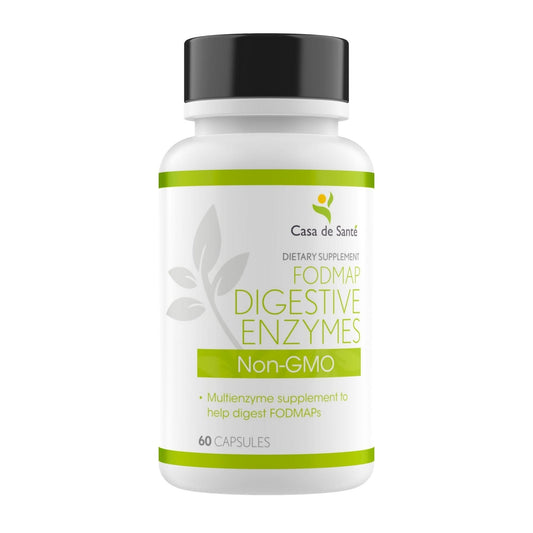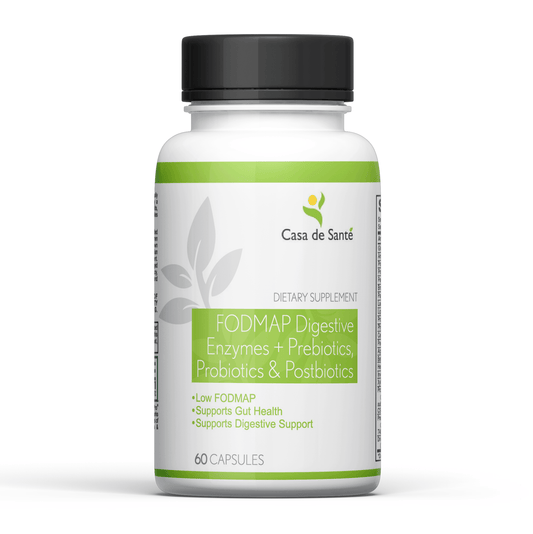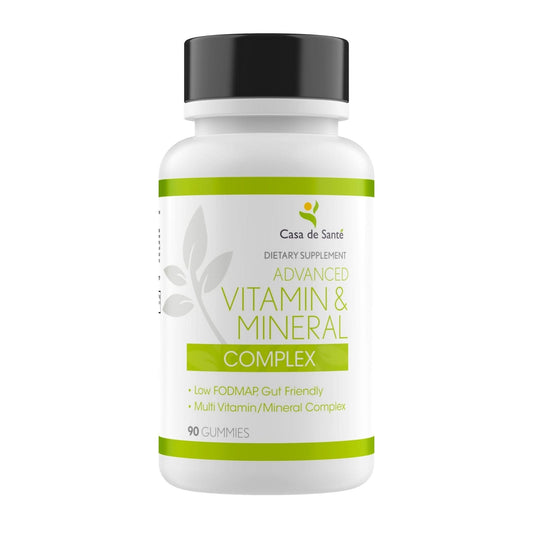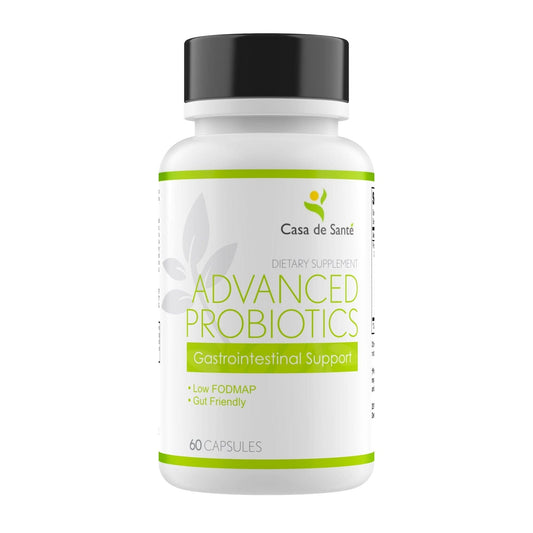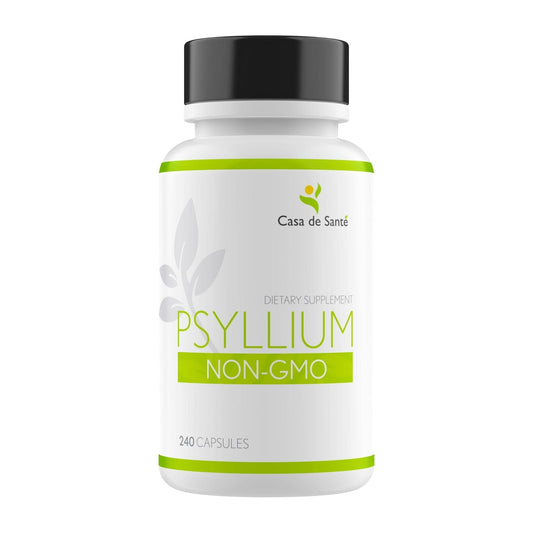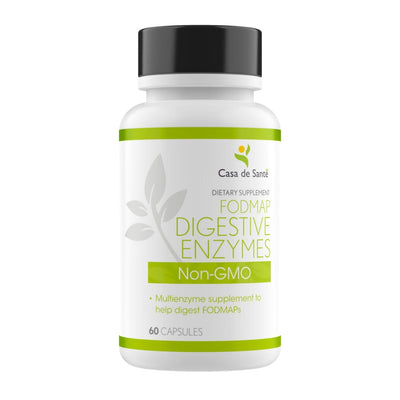Is Tapioca Dextrin High In Histamine
Is Tapioca Dextrin High In Histamine
Tapioca dextrin is a commonly used food ingredient that has gained popularity due to its various functionalities and applications. However, there have been concerns regarding its histamine content and its potential effects on histamine levels in the body. In this article, we will delve into the connection between tapioca dextrin and histamine, explore the production process and nutritional profile of tapioca dextrin, discuss the potential health implications of high histamine levels, and provide dietary management strategies for histamine intolerance. Let's start by understanding what tapioca dextrin is.
Understanding Tapioca Dextrin
Tapioca dextrin, also known as tapioca maltodextrin, is a soluble dietary fiber derived from the cassava root, a starchy tuber native to South America. It is produced by extracting the starch from the cassava root and then subjecting it to a process that involves enzymatic hydrolysis and drying. This process results in the formation of small, easily digestible molecules that have various functional properties in food production.
Tapioca dextrin has gained popularity in the food industry due to its unique characteristics and versatility. It is commonly used as a thickening agent, stabilizer, and emulsifier in a wide range of food products. Its ability to absorb and retain water makes it an excellent choice for improving the texture and mouthfeel of foods. Additionally, tapioca dextrin can enhance the shelf life of products by preventing moisture migration and reducing the risk of microbial growth.
The Production Process of Tapioca Dextrin
The production of tapioca dextrin starts with the extraction of cassava root starch. Cassava roots are harvested and washed to remove dirt and impurities. They are then grated or crushed to release the starch. The starch is separated from the fibrous material through a process called washing and sieving.
Once the starch is obtained, it is mixed with water and enzymes to break down the long chains of starch molecules into shorter chains, or dextrins. Enzymatic hydrolysis is a crucial step in the production process as it helps to convert the starch into soluble dextrins that are easier to digest and have improved functional properties.
The mixture of starch and enzymes is then heated and agitated to facilitate the hydrolysis process. The enzymes break the starch molecules into smaller units, resulting in the formation of dextrins. The temperature and duration of the heating process are carefully controlled to achieve the desired degree of hydrolysis.
After the hydrolysis step, the dextrin mixture is further refined to remove impurities and unwanted components. This refining process involves filtration, centrifugation, and sometimes the use of activated carbon to purify the dextrins. The purified dextrin solution is then concentrated and dried to produce tapioca dextrin powder.
Nutritional Profile of Tapioca Dextrin
Tapioca dextrin is primarily composed of carbohydrates, with minimal amounts of protein, fat, and fiber. It is low in calories and does not contain significant amounts of vitamins or minerals. As a dietary fiber, tapioca dextrin can contribute to increasing overall fiber intake and promoting digestive health.
Due to its soluble nature, tapioca dextrin can be easily fermented by beneficial bacteria in the gut, promoting the growth of a healthy gut microbiota. This fermentation process produces short-chain fatty acids, such as butyrate, which have been associated with various health benefits, including improved gut barrier function and reduced inflammation.
It is important to note that while tapioca dextrin can be a valuable addition to a balanced diet, its nutritional value should not be relied upon as a significant source of essential nutrients. It is always recommended to consume a variety of nutrient-rich foods to meet your body's nutritional needs.
The Connection Between Tapioca Dextrin and Histamine
Now that we have a better understanding of tapioca dextrin, let's explore its connection to histamine and how it may influence histamine levels in the body.
What is Histamine?
Histamine is a compound that is naturally produced by the body and plays a vital role in the immune response, regulating stomach acid production, and neurotransmission. It is also found in certain foods and can be either ingested or produced by bacteria during food fermentation. Histamine intolerance is a condition characterized by the body's inability to efficiently break down and eliminate histamine, leading to an accumulation of this compound in the body.
When histamine levels become too high, it can result in a range of symptoms such as headaches, nasal congestion, itching, hives, digestive issues, and even anxiety. Managing histamine levels is crucial for individuals with histamine intolerance to prevent these symptoms from occurring.
How Tapioca Dextrin May Influence Histamine Levels
There is limited scientific evidence suggesting that tapioca dextrin itself contains histamine or directly influences histamine levels in the body. However, individuals with histamine intolerance may be more sensitive to certain food ingredients, including tapioca dextrin. This sensitivity can vary from person to person, and it is essential to consider individual tolerance levels and overall dietary factors when managing histamine-related symptoms.
Tapioca dextrin is a common food additive that is derived from tapioca starch. It is often used as a thickener, stabilizer, or filler in various processed foods. While it may not directly contribute to histamine levels, it is important to note that processed foods, in general, can contain high levels of histamine or trigger the release of histamine in the body.
Furthermore, individuals with histamine intolerance often need to follow a low-histamine diet, which involves avoiding or limiting certain foods that are known to be high in histamine or trigger histamine release. This can include fermented foods, aged cheeses, cured meats, alcohol, and certain fruits and vegetables. Tapioca dextrin, although not inherently high in histamine, may be present in processed foods that are on the list of histamine triggers, making it necessary to be cautious when consuming products containing this ingredient.
It is worth mentioning that everyone's tolerance to histamine and sensitivity to certain food ingredients can vary. Some individuals with histamine intolerance may find that they can tolerate tapioca dextrin without experiencing any adverse effects, while others may need to avoid it altogether. It is always recommended to work with a healthcare professional or registered dietitian who specializes in histamine intolerance to develop an individualized dietary plan.
Potential Health Implications of High Histamine Levels
Excessive histamine levels in the body can lead to histamine intolerance, a condition that can cause a range of unpleasant symptoms. Let's explore the symptoms of histamine intolerance and the potential long-term effects of high histamine levels.
Symptoms of Histamine Intolerance
The symptoms of histamine intolerance can vary widely among individuals and may include but are not limited to: headaches, migraines, nasal congestion, hives, itching, flushing, gastrointestinal distress, irregular heartbeat, and anxiety. These symptoms can be challenging to pinpoint and may overlap with other conditions, making diagnosis and management a complex process.
Headaches are a common symptom experienced by individuals with histamine intolerance. These headaches can range from mild to severe and may be accompanied by other symptoms such as nausea and sensitivity to light and sound. Migraines, a more severe form of headache, can also be triggered by high histamine levels. These migraines can be debilitating, causing intense pain, visual disturbances, and even temporary loss of vision.
Nasal congestion is another symptom that individuals with histamine intolerance may experience. This congestion can make breathing difficult and lead to a stuffy or runny nose. It can also contribute to sinus pressure and discomfort.
Hives and itching are common skin-related symptoms of histamine intolerance. Hives are raised, itchy welts that can appear on the skin and may vary in size and shape. Itching can occur not only on the skin but also in the eyes, nose, and throat, causing further discomfort.
Flushing, characterized by redness and warmth in the face and neck, is another symptom associated with high histamine levels. This flushing can be triggered by various factors, including certain foods and medications, and can be accompanied by a sensation of heat or burning.
Gastrointestinal distress is a broad term that encompasses symptoms such as abdominal pain, bloating, diarrhea, and constipation. Individuals with histamine intolerance may experience these symptoms due to the effects of histamine on the digestive system.
Irregular heartbeat, also known as palpitations, can occur as a result of high histamine levels. This can manifest as a racing or pounding sensation in the chest, and may be accompanied by feelings of anxiety or panic.
Overall, the symptoms of histamine intolerance can significantly impact an individual's quality of life, causing discomfort and distress. It is crucial for individuals experiencing these symptoms to seek medical advice for proper diagnosis and management.
Long-Term Effects of High Histamine Levels
While the short-term symptoms of histamine intolerance can be distressing, the long-term effects of prolonged exposure to high histamine levels are not yet well-understood. Further research is needed to comprehensively assess any potential health implications. However, it is essential to address histamine intolerance symptoms and manage them effectively to improve overall quality of life.
Some studies suggest that chronic inflammation caused by histamine intolerance may contribute to the development of certain chronic conditions. For example, there is evidence linking histamine intolerance to gastrointestinal disorders such as irritable bowel syndrome (IBS) and inflammatory bowel disease (IBD). High histamine levels may also play a role in the development or exacerbation of allergies, asthma, and skin conditions like eczema.
Additionally, high histamine levels have been associated with mental health conditions such as anxiety and depression. Histamine is involved in neurotransmitter regulation, and imbalances in histamine levels may influence mood and emotional well-being.
It is important to note that the long-term effects of high histamine levels can vary from person to person, and more research is needed to fully understand the potential health implications. However, by managing histamine intolerance symptoms and working closely with healthcare professionals, individuals can take steps to improve their overall well-being and minimize any potential long-term effects.
Dietary Management for Histamine Intolerance
Managing histamine intolerance involves adopting a dietary approach that minimizes histamine exposure while ensuring adequate nutrition. Let's explore some dietary management strategies that can be helpful for individuals with histamine intolerance.
Low-Histamine Foods and Alternatives
Following a low-histamine diet involves avoiding or minimizing the consumption of foods that are naturally high in histamine or release histamine during storage or fermentation. This may include fermented foods, aged cheeses, cured meats, certain fish, and certain fruits and vegetables. It is important to work with a healthcare professional or registered dietitian to identify specific trigger foods and develop a personalized dietary plan.
Role of Probiotics in Managing Histamine Levels
Probiotics, beneficial bacteria that support gut health, have been suggested as a possible management strategy for histamine intolerance. Some studies indicate that specific strains of probiotics may help break down histamine and improve overall gut health. However, more research is needed to understand the efficacy and safety of probiotic supplementation for histamine intolerance.
Expert Opinions on Tapioca Dextrin and Histamine
As with any complex topic, viewpoints on the connection between tapioca dextrin and histamine may vary among experts in the fields of nutrition and medicine. Let's examine the perspectives of nutritionists and medical professionals on this matter.
Views from Nutritionists
Nutritionists generally consider tapioca dextrin to be a safe and well-tolerated food ingredient. While it is not a significant source of essential nutrients, its functional properties make it a useful component in various food products. However, individuals with histamine intolerance should be mindful of their tolerance levels and adjust their intake accordingly.
Medical Professionals' Perspective
Medical professionals recognize histamine intolerance as a legitimate condition that can significantly impact an individual's quality of life. They emphasize the importance of working with healthcare professionals to accurately diagnose and manage histamine intolerance symptoms. Regarding tapioca dextrin, medical professionals may advise individuals with histamine intolerance to monitor their tolerance levels and consider eliminating or reducing tapioca dextrin intake if it triggers symptoms.
Conclusion
In conclusion, tapioca dextrin itself is not inherently high in histamine. However, individuals with histamine intolerance may experience varying levels of sensitivity to certain food ingredients, including tapioca dextrin. It is important for individuals with histamine intolerance to work closely with healthcare professionals or registered dietitians to develop personalized dietary plans that address their specific needs and manage histamine-related symptoms effectively. Understanding the connection between tapioca dextrin and histamine can empower individuals to make informed choices about their diet and optimize their overall well-being.



